|
Modern travellers have developed an insatiable thirst for jet fuel, much to the detriment of previous modes of travel: ships and trains. While ships have evolved into cruising palaces, trains have far more limitations when it comes to the size of their carriages. Yet as a means to discover a new destination in a comfortable, relaxing pace, I'm a sucker for an epic train journey. Sit back and watch the world pass you by as we track down the world’s best train journeys. The Blue Train It’s amazing how much comfort you can cram into a carriage rolling along a gauge just 3ft and 6 inches wide. South Africa’s Blue Train is rightly regarded as perhaps the world’s most luxurious rail journey. Butler service, en-suite soundproofed compartments (with gold tinted windows), double beds with down duvets, marble-tiled bathrooms (many with full bath tubs), panoramic observation lounges, gourmet meals – no wonder its known as a moving five star hotel. There are two trains in operation - one catering to 74 guests in 37 suites, the other for 58 guests in 29 suites – operating on the main scheduled route from the administrative capital of Pretoria to Cape Town. Travelling at 90 km/hr, enjoy 27 pampered hours and spectacular scenery until you reach your final station. The Blue Train also operates two other routes: to Durban, and to the malaria-free Pilansberg National Park. Maharajas Express Not to be outdone, India’s Maharajas Express treats its 88 passengers like royalty, literally in the case of the presidential suite, which spans a whole carriage. Recalling an era where India’s grand Maharajas built their own lines to shepherd them in lavish carriages, the Express combines old world luxury with modern conveniences like a business centre, spa and gym. It offers five itineraries, ranging from the seven night Heritage of India, Indian Splendor and Indian Panorama to the three night Treasures and Gems of India. All visit destinations like Jaipur, Ranthambore and Agra, to see the Taj Mahal. My own rail journeys in India (in packed, sticky 2nd Class Sleepers) were memorable, but not for the right reasons. If you’re willing to pay, oh, several thousand times more for a ticket, why not treat yourself like a king? The Canadian We live in a large country, but when I took the 4-night, 3-day VIA Rail Canadian from Vancouver to Toronto, I could finally see just how large we’re talking about. Travelling 4466km through the Rockies and Prairies, expect to roll through four time zones, not seeing any signs of civilization for hours. The train’s weekly configuration changes depending on demand, but always has panoramic and double-story panoramic dome cars, excellent meals, clean bathrooms, fun activities and friendly staff. Recalling the 1950’s glory years, the stainless steel carriages have the pastels and feel of another era, especially the rear Park Car, with its distinctive dome and view of the tracks you leave behind. Currently undergoing refurbishments as part of VIA Rail’s almost $1 billion investment, The Canadian is rightly a national treasure, popular with both locals and international visitors. The Venice Simplon Orient Express / Eastern and Oriental Express Although these are two separate train journeys exploring two different continents, I’ve put them together because the same company owns them, and once you hear the word “Orient”, it’s easy to get confused. More so since there was an actual train known as the Orient Express, running between Strasbourg and Vienna, but that ceased operation in 2009. The Venice-Simplon is a luxury train operating from London to Venice, in vintage carriages dating back to the 1920’s and 1930’s. Restored to their former glory, cabin suites are heavy on the polished wood, with washbasins, banquette sofas and ever-attentive stewards. Swap out Europe for lush jungles and exotic temples, and hop aboard the more modern The Eastern and Oriental Express, which journeys between Malaysia, Singapore, Thailand and Laos. With its in-suite bathrooms and airy teak observation cars, itineraries range from 2 to 6 nights, offering various opportunities for temple visits and other excursions. The Ghan With its vast distances and sparse population, Australia is tailor made for an epic train journey. The Ghan, named after the late 19th century Afghan cameleers that created the route, traverses almost 3000 kilometres north to south and vice-versa from Adelaide through Alice Springs to Darwin. The 3 day/2 night crossing caters to a range of budgets, from the twin Red Service Sleeper Cabins with their compact lounge chairs (folding into sleeping berths), to the 25 en-suite Platinum Cabins, with in-cabin dining, attentive stewards and twin or double beds. Beginning with the ridges and plains of South Australia, the landscape transforms into the red earth and sweeping skies of the Central Australian outback. Day or multi-day excursions are on offer from Alice Springs, before continuing into the more tropical regions of Northern Australia. The train runs twice a week in each direction June to August, and once a week during the remainder of the year. Qinghai–Tibet railway China boasts the world’s fastest passenger train, the CRH380A running from Shanghai to Nanjing and Hangzhou at an astonishing 480 km/hr. Think more rollercoaster and less leisurely train journey. For less of a blur but all the thrills, consider the Qinghai-Tibet, an engineering marvel that connects the city of Xining to Lhasa, Tibet. It’s the first railway to navigate the mountains and treacherous terrain that encompasses Tibet. Once you cross the Tanggula Pass at 5072 metres above sea level, you’re officially on the world’s highest railway, rolling through the world’s highest tunnel, and stopping at the world’s highest railway station. With stunning views across the mountains and permafrost, the journey is literally breathtaking. At this altitude, breathing can become an issue, but the cold-resistant carriages were built for such challenging environments, and carry oxygen supplies on board for each passenger, along with an onboard doctor. The Rocky Mountaineer Repeatedly named as one of the world’s great train journeys by everyone from National Geographic to Conde Nast Traveler, The Rocky Mountaineer belongs to North America’s largest private rail service, running 1000 km through some of the world’s best scenery. Unlike VIA’s Canadian, which continues onto Toronto, the Rocky Mountaineer is designed to showcase the glorious Rockies in all their glory, with guests seated in two-level glass-domed panoramic dome cars, while interpreters point out wildlife and sites of interest. Guests spend the night in the company’s hotel in Kamloops before continuing their journey from Banff/Jasper to Vancouver, or vice versa. Along with the outstanding meals, let the cocktails flow! The Trans-Siberia / Trans Mongolian Railway When creating this list, I erred on this side of luxury, only because I’ve spent many days travelling on some of the world’s more challenging train rides, and while the memories are precious, I wouldn’t necessarily wish them on my readers. Trains are great, but not when they’re scary, like the time I peed at gunpoint on the Russian-Mongolian border. It took me three weeks to journey from Beijing to St Petersburg on two of the world’s most legendary rail networks. Along the way I raced horses in Mongolia, swam in the world’s deepest lake, and was almost tasered by some corrupt cops. Rudimentary carriages were OK, even if the attendants were smuggling starched clothing in our pillows. Meals consisted of instant noodles, instant mash, and anything else we could whip up with graciously provided hot water. I grew to appreciate the sneer of the attendants, and the taste of vodka, which was cheap and plentiful. An incredible adventure, definitely. But not for everyone. El ChePe The Chihuahua al Pacifico Railroad, more affectionately known as El ChePe, carries locals and tourists over 400 miles through the Sierra Madre mountains and the magnificent Copper Canyon. Departing Los Mochis in the morning and arriving in Chihuahua late in the evening, the train crosses 36 bridges (one at over 1000 feet) and 87 tunnels. It stops at 13 stations along the way, allowing travellers to hop on and off to explore the region. There are two classes to choose from, with the Primero Express offering a dining car as opposed to the Economico’s snack bar, but it’s the scenery that provides the tastiest fodder. Mexico’s most scenic train chugs alongside stunning jungle, mountains, canyons waterfalls, and even high desert. The Royal Scotsman
The Scottish Highlands are yours for the taking. By yours, I refer to the 36 guests pampered in absolute luxury aboard the Royal Scotsman. The train offers 2 to 7 night itineraries that take in the majestic Highlands, along with themed trips like the 4-night Classic Whisky Journey in conjunction with the Scotch Malt Whisky Society. Enjoy gourmet bliss in the mahogany-panelled dining car, and make sure to pack a kilt for alternating formal nights (if you forget, you can still hire one). Twin, Double and Single cabins are equipped with in-suite bathrooms, with the plush sofas in the observation car perfect to watch quaint villages and medieval castles pass you by.
0 Comments
I am the passenger and I ride and I ride I ride through the city's backsides... Iggy Pop Next time you're walking through a crowded subway, tune a little Iggy Pop into your headphones. We are all passengers, and we all ride and we ride. The last time I rode the tube in London, I got thinking about the world's major subway systems, asking questions that this blog post would later answer: New York One of the oldest and largest urban transit systems in the world, New York’s subway currently has 468 stations in operation, with approximately 660 miles of routes clocking in at over 1.5 billion rides annually. It’s one of only four subways running 24 hours a day in the USA, vital for shepherding New Yorkers (and tourists) around the city, especially in Manhattan, where traffic is choked during rush hour and parking exorbitant. New York has the world’s largest fleet of subway cars (around 6200), and is probably the most recognized system thanks to being featured in movies like Saturday Night Fever, Ghost and the Taking of Pelham 123. Here’s a neat fact: New York’s subway has only 60 stations less than all the combined subway stations in the United States. London The oldest underground rapid transit system in the world is the London Underground, known affectionately as the “Tube.” Its first sections were built in 1863, and the Northern Line was the world’s first electric train. The tube currently has 270 stations and 402 kilometres of track, covering central London and stretching way into the suburbs, Heathrow airport, and even surrounding regions of Essex and Buckinghamshire. Linking seamlessly with an excellent bus system and above-ground trains, including rail and the Docklands Light Rail, the map of the iconic coloured lines of each route have become a design classic. Be aware the Underground map doesn’t correspond to geography above-ground, which is why some tourists might spend 45 minutes taking the Tube to a destination just a ten minute walk away. Shanghai China’s largest municipality (over 23 million people!) is served by the world’s longest metro network. The Shanghai Metro’s 11 lines and 278 stations delivers over 2 billion rides annually, at about 5.5 million rides a day. Three lines converge at the busiest station, People’s Square, located near the popular Nanjing Road shopping district. Fares are based on distance, and allow you to transfer between lines, as well as railways and buses. Transit cards can be purchased as stations, convenient stores and banks, and can be used to pay for buses and even taxis. Connected to the Metro, although it is not included in the system itself, is the Maglev. Reaching a speed of 431 km/hr, the train’s magnetic levitation system makes it the world’s fastest commercial regular service, and a 30 km thrill ride from the airport. Montreal 25 Stations opened in 1966 in time for the 1967 World Fair. Today, the Métro de Montréal has 68 stations running on four lines. It is Canada’s busiest subway system, third in North America after New York and Mexico City. Designers looked to Paris for inspiration, and Montreal’s rubber-tired efficiency has in turn inspired other Metros like Santiago, Lyon and Mexico City. Rubber tires were chosen because they are quiet, turn at higher speeds, and reduce vibration for passengers. They also allow faster speeds than conventional steel tracks. Due to winter weather, the 759-cars run entirely underground, and are not weatherproof. Although public art in stations was popular in communist countries, Montreal was a pioneer introducing stained glass, sculptures and paintings to western metro stations. Moscow With millions of people flocking to the capital from around Russia, Soviet leadership in the 1920’s recognized the potential for the Moscow Metro to be more than just a transportation necessity. It was designed to serve as an ambitious vehicle for propaganda and communist ideology. The Moscow Metro opened with 13 stations in 1935, with 285 000 passengers using it that day. Today’s Metro receives a 6.6 million passengers each day, the second most heavily used transit system in the world after Tokyo. It was Stalin who commissioned some of the era’s greatest architects and artists to design stations that would inspire and overwhelm the proletariat with the power of the state. Unlike the functional transit systems that were being developed in other major world cities, the Soviet goal was to build underground palaces, reflecting a radiant future to all who used it, designed and lit up like grand ballrooms. Visiting the most famous stations - Ploschad Revolutsii, Komsomolskaya, Mayakovskaya – is a must for any visitor to the city. Paris Distinctive by the Art Nouveau entrances of some its stations, the Paris Métro is one of the world’s most compact transit systems, cramming in 245 stations and 87 kilometres of track within the city itself. First opened in 1900, by the 1940’s, there was no more space to expand lines within the city, and so faster cars were introduced to increase ticket sales. You can choose your direction on the 14 lines, distinguished with colours and numbers, by selecting the destination terminus. 4.5 million passengers use the Métro every day, so you won’t be alone. The Métro does not run 24 hours, which is why locals call the last train the balai, the “broom” that sweeps up the night’s last passengers. Tokyo The busiest subway in the world – over 8 million passengers daily – has a map that is a labyrinth of lines and colours, leaving many visitors confused and disorientated. With over 880 stations on the extended rail network, it’s a Sudoku puzzle figuring out where you want to go. During rush hour, white gloved “train packers” jam people into every square inch of space so the doors can close. Just getting around the stations can be quite a trek, and because each mode of transportation in Tokyo is operated by a different company (including two subway systems), you’ll require a different fare ticket if you transfer. Your best bet is to buy a Suica, a pre-paid card that works on every system, and can even be used for vending machines. Alternatively, the Tokyo Free Kippu allows one day of unlimited travel on all subways, trains and buses. Toronto Canada’s oldest and largest subway system currently has 4 lines, 69 stations and 70 kilometres of track. Typically named for its nearest artery, it carries over a million passenger rides each weekday, and is integrated with streetcars and buses throughout the Toronto Transit Commission. Hanging around the platforms, you may notice some of the two-dozen artworks that breathe life into the system. My favourite is the opposing murals at College station entitled Hockey Knights in Canada. The Montreal Canadiens and Toronto Maple Leafs eternally face off on opposing platforms. Artists have used glass, tiles, and paint to create wonderful works in stations like Spadina, Dupont, St.Clair West and Eglinton. The busiest stations: Bloor (Yonge-University), Yonge (Bloor-Danforth) and St George (Bloor-Danforth). Seoul With an average of 7 million rides each day, Seoul’s Metropolitan Subway is one of the world’s busiest transit systems. Many of its 18 lines are still expanding, with a current total of 560 stations operated by seven different organizations. All signs are in Korean and English, and helpfully for tourists, all announcements are made in Korean and English too. Along with single-journey tickets, various transportation cards work across all the systems, with discounts for kids and seniors. Navigating is fairly easy: each station has a name, number and colour. Transfer stations are clearly marked, and trains are generally very efficient. Ever pushing the technology envelope, the Seoul Subway introduced the world’s first virtual subway supermarket, where passengers use their smart phones to scan QR codes of products (laid out like a shopping shelf) which can be purchased and delivered to their homes. Santiago
South America’s most extensive and expanding subway system is in the Chilean capital of Santiago, with 105 stations servicing five lines and over one hundred kilometres of track. Inspired by Montreal, three of the tracks use rubber-tired cars, and like Montreal, art features prominently inside the stations. Over 45km of new track will be laid in the next few years alone, highlighting the success of the government’s overhaul of the city’s public transport system. Line 1, servicing downtown Santiago, is the city’s busiest track. Bike lockers at various stations have further eased the traffic congestion in the city. When a massive 8.8 Richter scale earthquake hit Chile in 2010, the Metro held up strong, with only station closed for superficial repairs. I’m standing on a gravel airstrip on the north of Somerset Island, permanent population zero. During the summer months, tourists visit an amazing eco-lodge called Arctic Watch, watching thousands of Beluga whales, swimming in crystal waterfalls, and hiking in the tundra. As we waited for our charter return flight to arrive, with supplies and a new arrival of guests, the weather closed in. Keeping an eye out for polar bears, it got me thinking about other remote landing strips, and in particular airports. Pilots can land a plane on any dirt strip, but a commercial airport requires infrastructure, a yellowing bathroom, maybe a broken vending machine. Military airports need not apply. Here’s some of the world’s most remote, along with some of my own adventures discovering them. Resolute Bay Airport, Nunavut Airport Code: YRB Since we’re in the North, lets start with the closest airport to my landing strip on Somerset Island, in this case, Resolute. It’s the second most northerly community in Canada, population around 240. The Inuktitut word for Resolute literally means “place without dawn.” Midnight sun in summer, Arctic night in winter, and the sun never rises either way. The airport receives regular flights from First Air as well as charter planes, and plans are afoot for the Canadian Military to expand the airport to make it a major Arctic centre for its operations. In the meantime, the community gratefully receives its supplies, and lifeline, from planes landing at its simple airport. Perth International, Australia Airport Code: PER It’s the fourth busiest airport in Australia, serving the capital of Western Australia with a population of 1.75 million. So how does Perth International feature on this list of outposts? After all, it services 37 airlines flying to 77 destinations, and over a thousand flights a week! The answer is simple: Perth is arguably the most isolated city in the world, closer to Jakarta than it is to Sydney (there are arguments that Honolulu is more isolated, in which case, we should add Honolulu International HNL to this list). Sure, it’s far from everything, but it also boasts sensational beaches, Australia’s wine growing region, and a wonderful quality of life. Bahir Dar Ethiopia Airport Code: BJR Admittedly, Bahir Dar is not one of the world’s most remote airports, but trust me, it’s the last place on earth you’d ever want to end up. OK, I’m being a bit harsh, but I did spend 8 hours there, and you probably did not. What happened was our Ethiopian Airways flight from Addis Ababa to Lalibela stopped off in Bahir Dar as per schedule. We took off again, flew ten minutes over Lake Tana, and the pilot announced engine troubles. Not a good thing to hear, so I was somewhat relieved when we landed safely back at Bahir Dar. Four sweltering hours later, during which time I counted every cracking tile in the airport wall, the replacement plane arrived. Problem is, it had broken down too. So we waited another four hours for the replacement replacement plane. We arrived 10 hours late, nerves frazzled, but thankfully, in one piece. And that’s all we can really ask for, right? Kulusuk Airport, Greenland Airport Code: KUS Another isolated northern airport, this time on the east coast of Greenland. Since everyone knows Greenland is far icier than Iceland (which services the airport), it’s rather disturbing to note the airport doesn’t have de-icing equipment. The terminal does have a duty free shop, a small cafeteria, and considering there are only 3 to 5 flights a day, a reputation for being chaos in the arrivals/departure hall. Kulusuk is the gateway to Ammassalik, a remote region that does receive a fair share of tourists chasing Arctic adventures. Atiu, Cook Islands Airport Code: AIU The Cook Islands are made up of 15 islands, covering a whopping 1.8 million square kilometres of Pacific Ocean. Tourists might visit a couple inhabited islands, and the views of the turquoise lagoons are simple staggering. On Atiu, I got dirty in an ancient burial cave, joined in a local birthday party, and had a great time in a traditional bush pub, sharing homemade orange moonshine out of a coconut cup with a dozen locals. When it was time to fly back to Rarotonga, the friendliness of this tiny island (population 560) was literally on display at the airport. A sign above the waiting hut read: “Voluntary Security Check: Would passengers please hand in their AK47’s, bazookas, grenades, explosives, and nukes to the pilot on boarding the aircraft. Airport Management thanks you for your cooperation. “ Petropavlovsk-Kamchatsky Airport, Russia Airport Code: PKC In the world of highly remote eco-adventures, the Russian peninsula of Kamchatka is making waves with its lunar landscape, snowcapped mountain peaks and volcanoes. Since there are no roads or rail connecting the region to the mainland, the airport is the lifeline for the region’s main town, Petropavlovsk-Kamchatsky. Seasonal flights are bringing tourists in from the USA, Japan, China and Moscow. The peninsula is also home to Russia’s largest submarine base, and while isolated, has a population of 180,000. Moscow is just a nine-hour flight away! Mataveri International Airport, Easter Island, Chile Airport Code: IPC Widely regarded as the world’s most remote airport, Mataveri is 3759 kilometres away from the nearest airport, in Santiago, Chile. For all its isolation, the airport does do brisk traffic, thanks to tourists arriving from Santiago, Tahiti and Lima primarily to see the famed stone heads that mysteriously guard the island. Easter Island is perhaps the world’s most remote inhabited island, so stands to reason its airport makes the list. With an asphalt runway serving 737’s, the airport was also an abort site during the space shuttle program. St Helena Airport, British Overseas Territory Airport Code: TBA When construction is complete, the South Atlantic island of St Helena will boast one of the world’s most remote civilian airports, more than 2000 kilometres from the nearest landmass. The island is actually the centre of three British Overseas Territories, which are easily accessible should you happen to own a superpowered submarine. Ascension Island is only 1,300 kilometres north, while Tristan da Cunha is 2,400 kilometres south. Some 4255 people live on St Helena, with all food, equipment and supplies arriving by boat, which is expected to be retired in 2016 when the airport is complete.
I'm posting this from the domestic airport in Buenos Aires in early December, and like the Christmas decorations are up. This got me thinking: How is Christmas celebrated around the world? Never one to let a question go unanswered, let's begin in: Japan Japan has only a small percentage of religious Christians, but many Japanese enjoy the spirit of gift-giving and decorating home and stores in tribute to the seasonal festivities. Instead of Santa Claus, Japanese children look to a legendary Buddhist monk named Hotei-osho, known for bringing children gifts, and making sure they behave. Ethiopia Ethiopia’s calendar differs from our western calendar, which is why they celebrated the year 2000 seven years after we did, and why Christmas takes place on January 7th. They also have a different clock, but that’s another story. Christianity in the country dates back to the 4th century AD, and its famous rock churches were built as a new Jerusalem by Ethiopian kings. The Xmas church ceremony has three rings of prayer: men and boys sit inside a ring of women and girls, with a choir on the outside circle. Candles in hand, worshippers also walk around the church three times during mass. Instead of turkey dinners, traditional feasts involve injera (the pancake-like bread of Ethiopia) and various stews and curries. Scandinavia Many North American Xmas traditions derive from Scandinavia, with Santa Clause living in Greenland or Finland, depending on whom you speak to. Millions of people have written letters and posted it to Santa’s address, just outside of Rovaniemi on the Finnish Arctic Circle (write to: Santa Claus' Main Post Office, Santa Village, FIN-96930 NAPAPIIRI). Yuletide has always had special significance in the Scandinavia, where traditions were formed to hold off the dark, cold days of winter. The Yule log was an entire tree, fed into the fire over the course of the winter, with much ceremony. In Finland, Xmas dinner is preceded by a visit to the sauna to bathe and clean for the meal. Candles are important throughout the region as a means of ushering in the warmth of light during a dark time of year. Bulgaria The Bulgarian Christmas Eve dinner consists of 12 courses, with each course representing a month of the year. Made with nuts, beans, vegetables and sweets, no meat is served. Tradition has the family seated on straw, and sitting down and getting up at the same time. In the past, boys and single men would visit houses singing carols for the health of the families (and maybe the eye of a maiden too). Brazil Around the country, in churches, homes and shops, many Brazilians set up nativity scenes called Presèpio, named after the bed of straw Jesus slept on in Bethlehem. Father Christmas is known as Papa Noel, flying in from Greenland to pass out gifts, dressed in silk because it’s too hot to be robed in furs. Religious Catholics head to Missa do Galo, the midnight mass named after the rooster that announces the coming day. Even the streets of Rio de Janeiro are quiet on Christmas Eve, as families gather for their Ceia de Natal feast. Like most days in Rio, Christmas Day is a perfect time to hit the beach. Philippines The only major Christian nation in Asia also celebrates its Misa do Galo, a tradition dating to its Spanish occupation. Unlike Brazil however, this mass takes place nine days before Christmas, and involves reading the story of Jesus. On Christmas Day, masses are held hourly so that everyone has a chance to attend. Pastore are plays based on the birth of Christ, performed at many religious services. Children go carolling for tips and treats and setting off fireworks, with another tradition being the making of lanterns, a symbol of the guiding star. Xmas dinner involves a lavish feast, often started after midnight when the family returns from midnight mass. Russia The inspiration of Santa Claus, St Nicholas, holds a special place in the heart of Russians. Revered as a saint since the 11th century, his name adorns many churches, and is commonly passed onto Russian boys. During the communist era, the role St Nick was transformed into Grandfather Frost, enabling traditions to be kept without antagonizing the atheist principles of the time. Similarly, Christmas trees became New Year’s Trees, although both traditions have reverted with the fall of the Soviet Union. Russians also talk about Babouschka, a woman who roams the countryside in search of Christ, giving gifts to children as she does so. Eastern Orthodox Russians customarily fast until after the first church service on Christmas Eve, and their feast contains no meat. One traditional dish is called kutya, a sweet porridge symbolizing hope and happiness, eaten from a common dish. Vietnam Christians are a minority in Vietnam, but Christmas is celebrated as one of the four major holidays of the year (along with New Year, the Buddha’s birthday, and the mid-autumn festival). Jesus Christ is known as Kito, and Christmas is a big cause for celebration, although this was not always the case. During communist rule, Christmas was relegated to the home and was not the public spectacle. As the country modernized and liberalized, Xmas has returned with a bang, with the usual lights and decorum proudly displayed throughout cities, shops, villages and homes. Merry Christmas, Happy Hanukkah, and all the best for the silly season!
When people talk about travelling for" the food", this is what they're referring to. Nasi Kander - Malaysia Nasi Kander is a northern Malaysian dish that combines a variety of elements – meat, rice, vegetables – and smothers it with various types of sweet-spicy curry sauces. Served in buffet-type street stalls, the result is a gift to your taste buds. Eggplant, beef, chicken, squid, peppers, and okra are all flooded with flavour, soaked up by coconut rice and scooped with the right hand. Ceviche - Peru, Ecuador, Costa Rica You can get ceviche around the world, but not the way they make it here. Raw fish, shrimp and calamari are drowned in limejuice, herbs and spices. The acidity of the lime cooks the fish, creating a mouthwatering delicacy that is served in the finest restaurants, all the way to roadside shacks. In Peru, it is often served with giant corn, and people sometimes order the leftover juice on its own, called Tiger Juice. In Ecuador, and other parts of the continent, ceviche is served with crackers. My favourite ceviche of all time is served out of a big tub in a tiny ice-cream store in Santa Theresa, Costa Rica. Photo: Sam@flickr Borscht - Russia I struggled with the food in the Russia, easily reaching my limit of boiled meat and potato. One thing I never got tired of however was the borscht – a soup made of beetroot, with meats, dill and sour cream. Considering how bland Russian cuisine can be, the complexity of taste in well-prepared borscht is staggering. Sweet, sour, tangy, and always ready to warm you up on a cold day. My favourite borscht was served in Irkutsk, Siberia, where a vegetarian friend and I ordered borscht without the mystery meat, and it still knocked our socks off. Photo: appaIoosa Biltong - South Africa The easiest way to describe biltong is to compare it to beef jerky, but that’s like comparing a Prius to a Porsche. South Africans have been making biltong for hundreds of years, spicing, salting and hanging strips of raw meat until it dries out, but not too much. No sugar, no preservatives, no neat wafer thin slices. Biltong is served in chunks, sometimes wet (rarer) and sometimes dry (tough). It can be salty, spicy, fatty or lean. Choosing the right piece is part of the fun. It makes the perfect accompaniment to any sports game or road trip. Photo: rubalo Farofa - Brazil If you visit a Brazilian churrascaria, where a never-ending stream of meat is served until you’re ready to explode, you might notice a bowl on the table of something that looks like breadcrumbs. Brazilians eat it with everything – meat, fish, stews, roasts. It’s not breadcrumbs, but rather manioc flour, fried with butter. Somehow it adds something to the dish – more substance, certainly, but also a way to carry the taste a few yards further. It took me a while to get used to it, but these days, when the BBQ is firing, there’s always a bowl of farofa on my dinner table. Photo beckstei Ika Mata - Cook Islands Cook Islanders have created their own little slice of culinary heaven, using a resource that surrounds them in abundance - fish and coconuts. Similar to ceviche, raw fish is marinated in limejuice and spices, with the addition of coconut milk. It’s not quite as tangy as ceviche, but just as fresh. The coconut milk softens the spices and also tenderizes the fish. It goes down smooth on a hot island day, a rich treat available just about everywhere you go on the islands. Awaze Tibs and Injera - Ethiopia Awaze tibs is a lamb or beef stew, cooked with onions, peppers and spiced with awazare, also known as berbere. Berbere, which features in many Ethiopian dishes, is a ground spice made of garlic, chili, ginger, basil, pepper, and fenugreek. The stew is slow cooked and served with injera, a spongy pancake-like flat bread made with teff flour, the taste almost sour. Using your hands, you scoop up the meat and sauce with the injera, creating a perfect blend of flavour. Pide - Turkey Kebab shops around the world now serve pide and for good reason. A thin oval bread is covered with ground lamb, and seasoned with tomato paste, red peppers, garlic and spices. It might be topped with eggs, fresh mint, and lemon juice. The pide is baked much like a pizza until the crust is crispy, and cut into strips. It’s so good it’s hard to order only one. Meat, bread and tasty vegetables in every bite. Photos: roboppy Roo Burgers - Australia It’s sometimes difficult for tourists to understand, but kangaroos can be quite a problem for Australians. They breed like rabbits, destroy the countryside, and are often referred to as pests. No surprise then that kangaroo features on the menu, meat that has become increasingly popular in recent years. It tastes gamey, kind of like venison with a touch of rabbit mixed in there as well. Much like ostrich meat, kangaroo meat is healthy and lean. If only they didn’t look so damn cute. Photo: Renee S Meat Pies - New Zealand In New Zealand, every garage station, bakery or corner store sells savory meat pies. They’re cheap, they’re tasty, and they come in surprising varieties: Tandoori Chicken, Bacon and Egg, Thai Beef. With flaky crusts and thick filling, pies are a sense of pride across New Zealand. There are various competitions for the Best Pie, and intense customer loyalty for bakeries and brands. All for under a fiver.
Photos: Robbi Baba |
Greetings.
Please come in. Mahalo for removing your shoes. After many years running a behemoth of a blog called Modern Gonzo, I've decided to a: publish a book or eight, and b: make my stories more digestible, relevant, and deserving of your battered attention. Here you will find some of my adventures to over 100 countries, travel tips and advice, rantings, ravings, commentary, observations and ongoing adventures. Previously...
July 2024
Categories
All
|

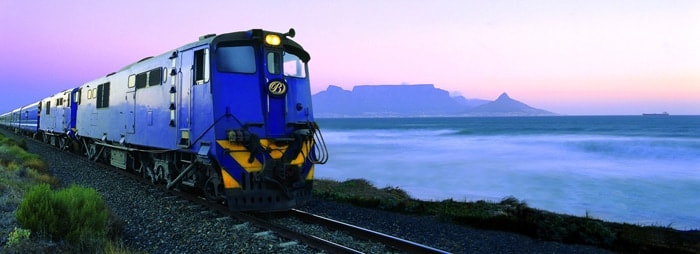


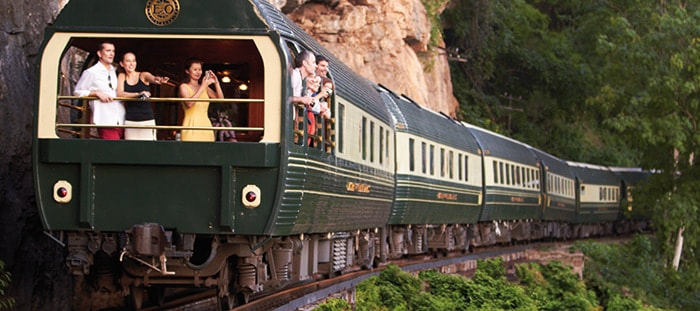


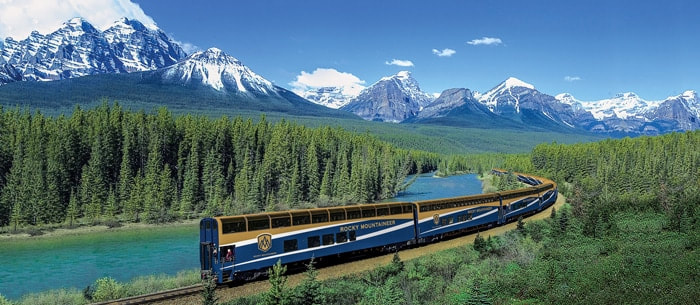
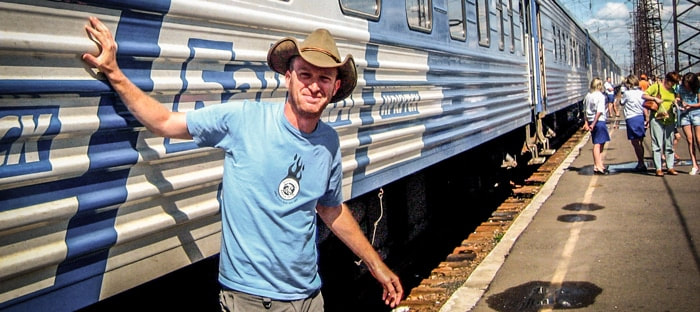



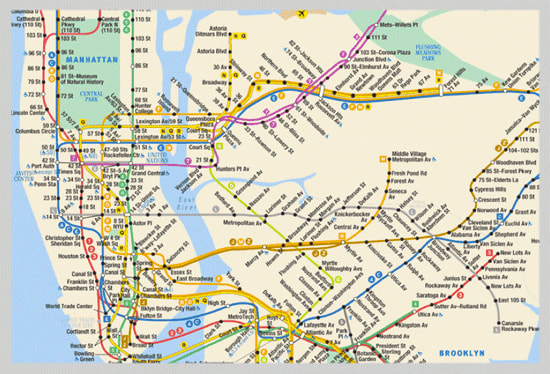
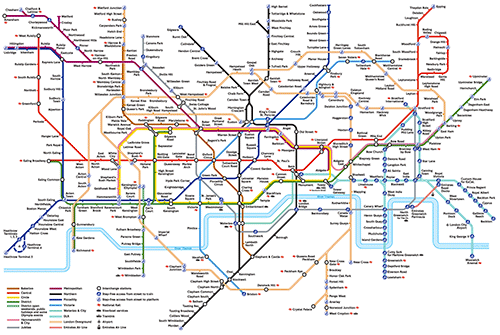
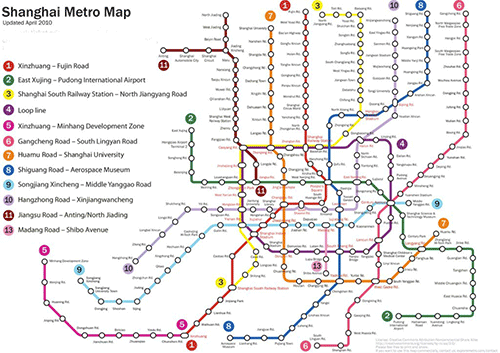
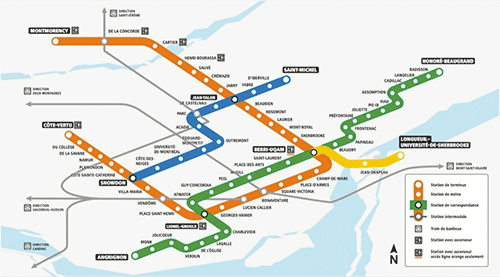
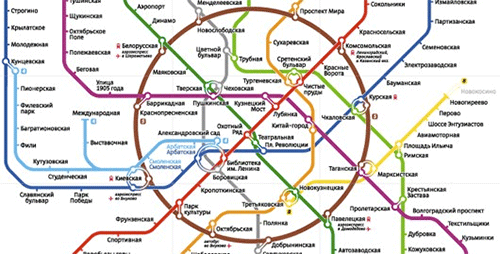
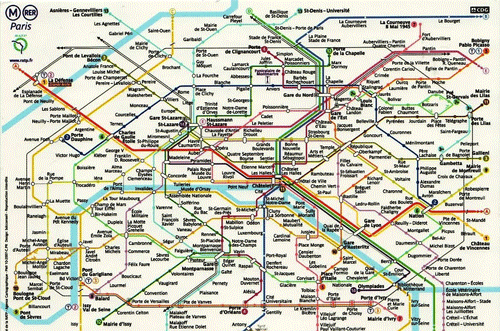

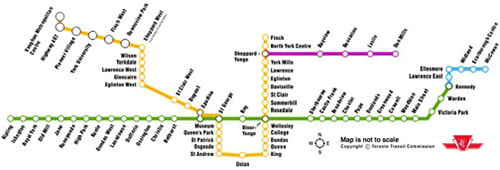

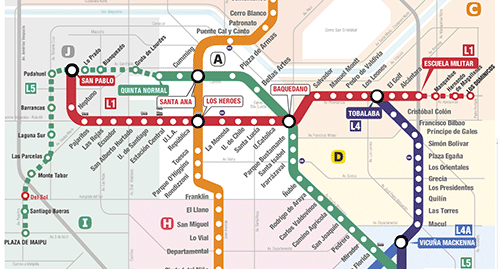
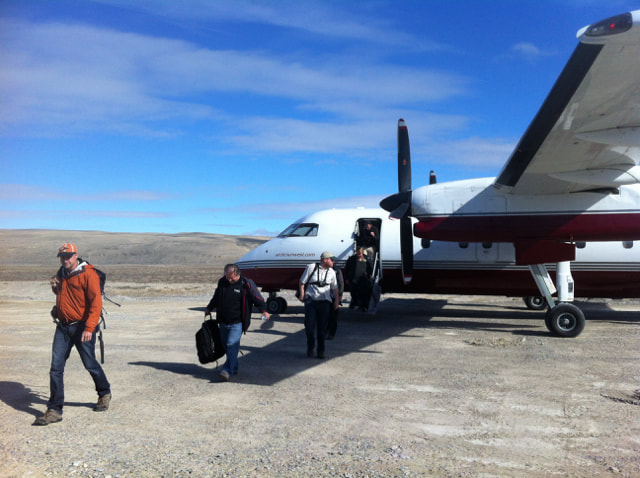
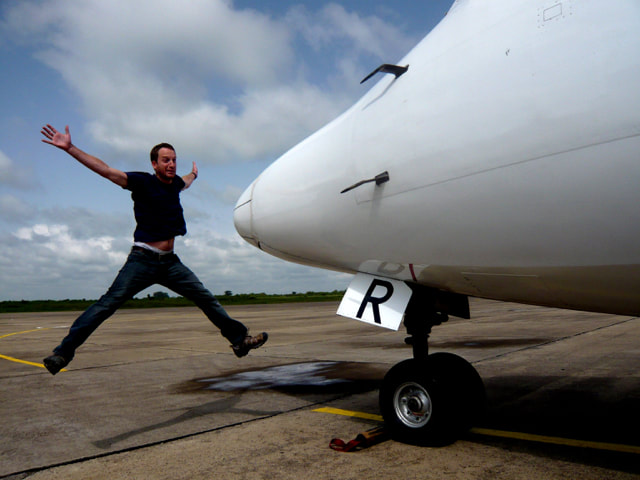
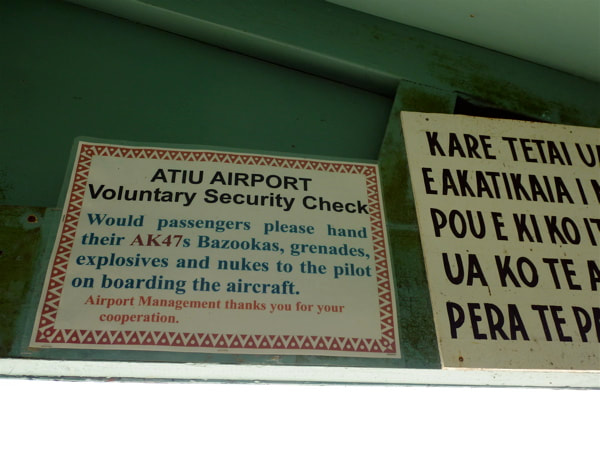
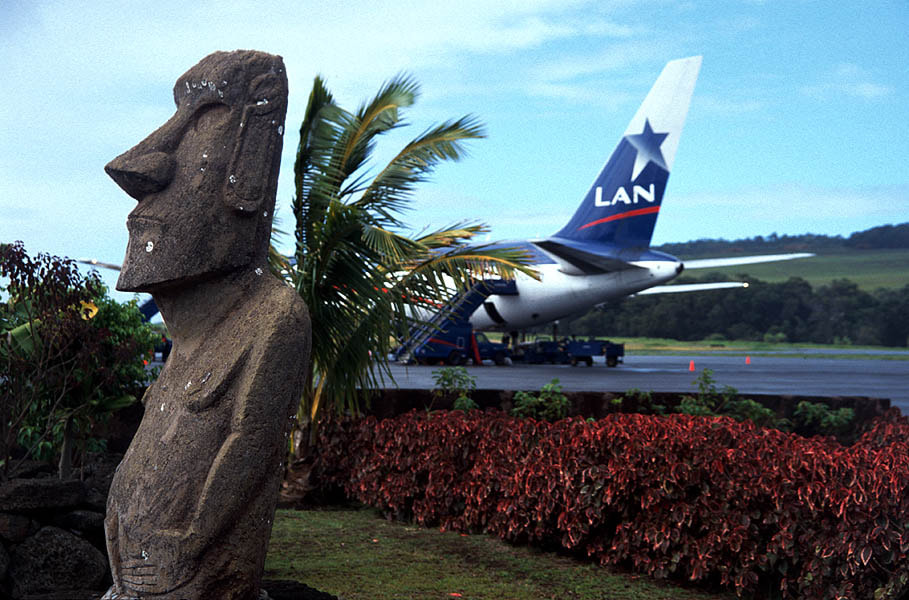
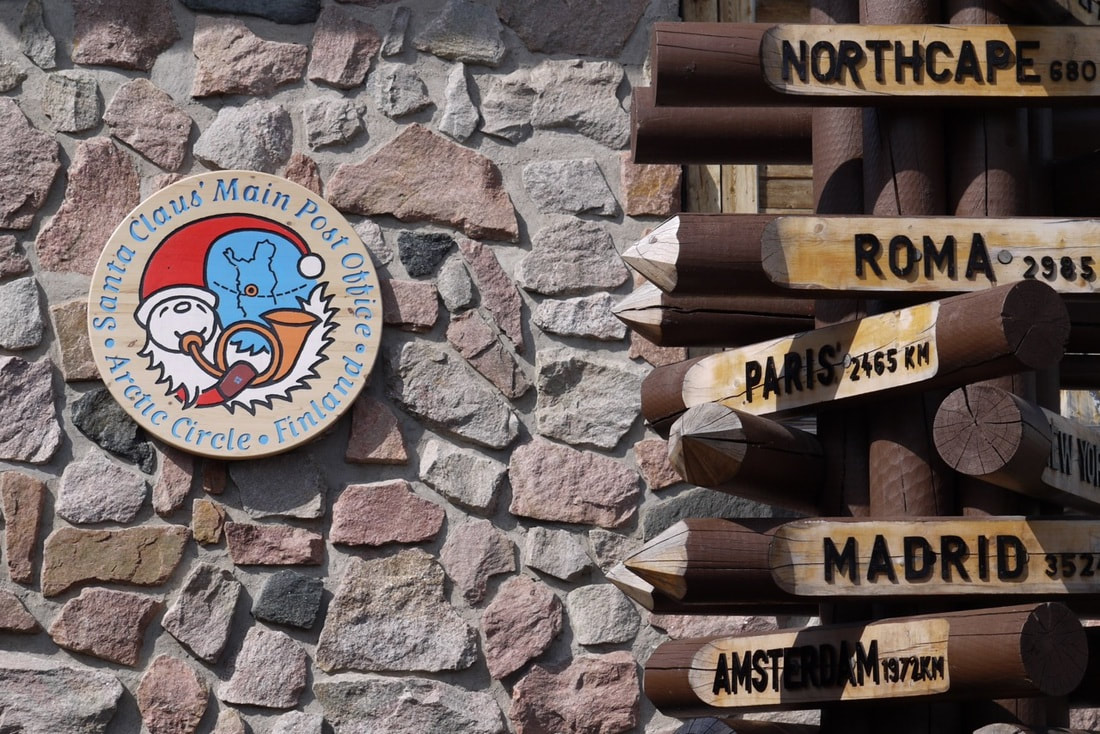
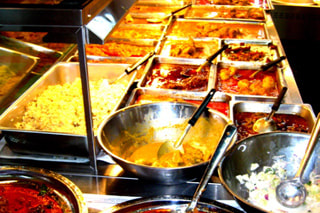
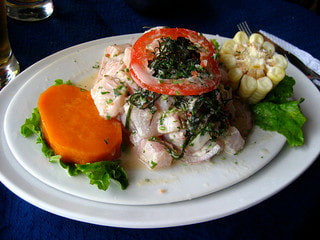
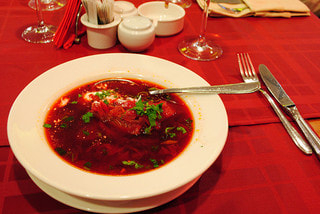
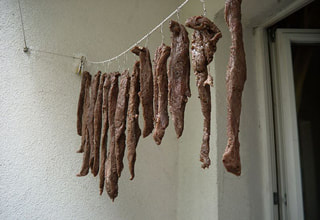
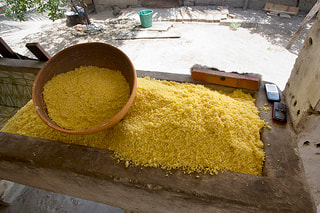
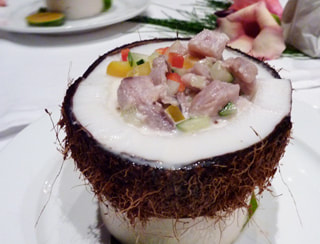
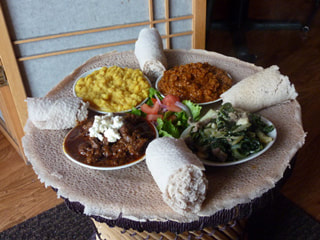
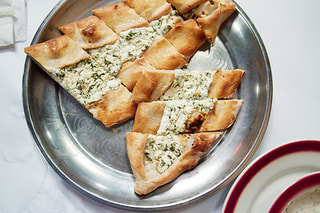

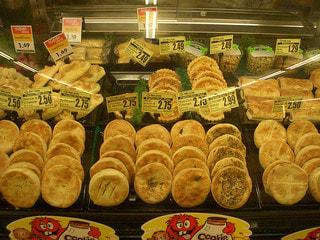
 RSS Feed
RSS Feed

